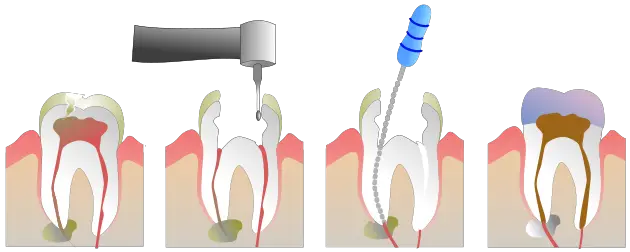Root Canal Treatment Plumstead
Root Canal Treatment in Plumstead are carried out to remove an irreversibly damaged ‘dental pulp’ due to decay, trauma or to remove infection found at the root of the tooth.
Anaesthetics are used to numb the tooth. Prior to starting any treatment, we check to make sure that patients cannot feel a thing. The dental pulp is gently removed and disinfected to remove any debris and infection at the root of the tooth. A root canal filling is carried out to seal the tooth. In most cases, a crown is then fitted to ensure stability and strength.
About
Root canal treatment, also known as endodontic treatment, is a dental procedure performed to save a tooth that has been severely damaged or infected. The procedure involves removing the infected or inflamed pulp from the inside of the tooth, cleaning and disinfecting the root canal system, and then filling and sealing it to prevent further infection.
Steps
Here's a step-by-step overview of the root canal treatment process:
- Examination and X-rays: Your dentist will examine your tooth and take X-rays to assess the extent of the damage and determine if a root canal is necessary.
- Anesthesia: Local anesthesia is administered to numb the area around the affected tooth, ensuring a comfortable experience during the procedure.
- Accessing the pulp chamber: The dentist will create a small opening in the tooth, usually through the crown, to access the pulp chamber and root canals.
- Removing the infected pulp: Using specialized dental instruments, the dentist will carefully remove the infected or damaged pulp from the pulp chamber and root canals. The canals are then cleaned and shaped to facilitate proper filling.
- Cleaning and disinfection: The dentist will use antimicrobial solutions to clean and disinfect the root canals, eliminating bacteria and preventing further infection.
- Filling the root canals: Once the canals are cleaned and dried, a biocompatible material called gutta-percha is used to fill the canals. It is placed in a rubbery or thermoplastic state and then heated to seal the canals.
- Restoring the tooth: After the root canal is completed, the access opening in the tooth is filled and sealed with a temporary or permanent filling. In some cases, a dental crown may be placed to provide additional strength and protection to the treated tooth.
- Follow-up care: You will be advised to schedule a follow-up appointment to monitor the healing process and evaluate the success of the root canal treatment. In some cases, the dentist may prescribe antibiotics or pain medications to aid in the healing process.
It's important to note that root canal treatment has a high success rate and is generally a relatively painless procedure due to the use of anesthesia. It allows you to retain your natural tooth and avoid the need for extraction, restoring its function and preserving your oral health.





